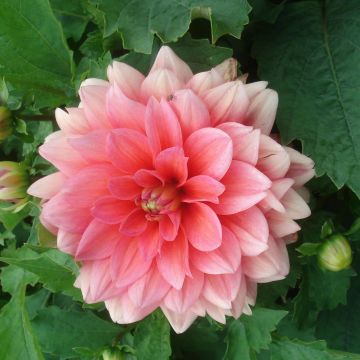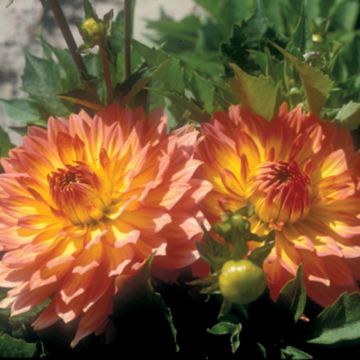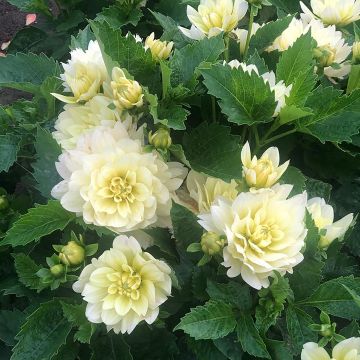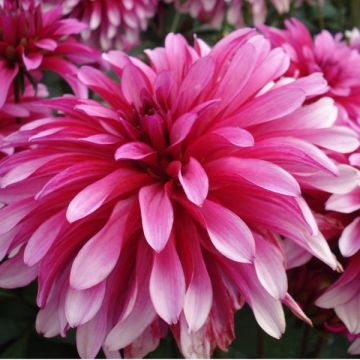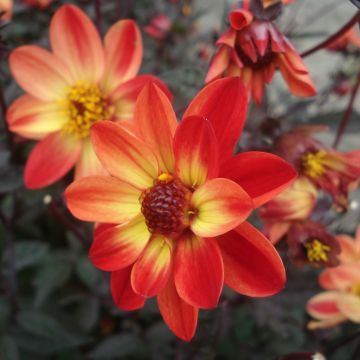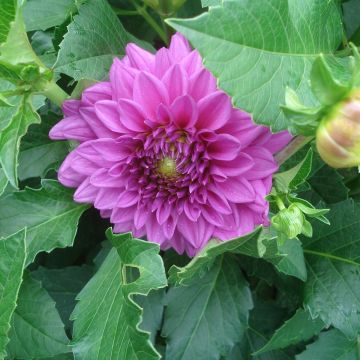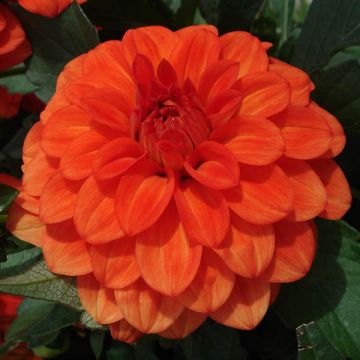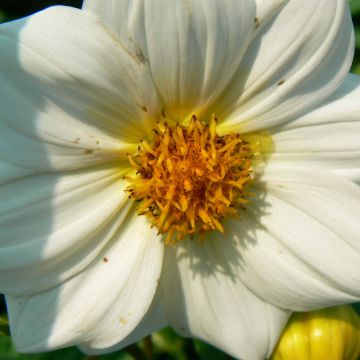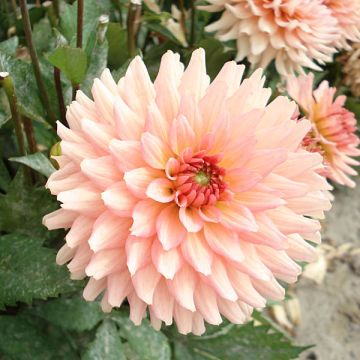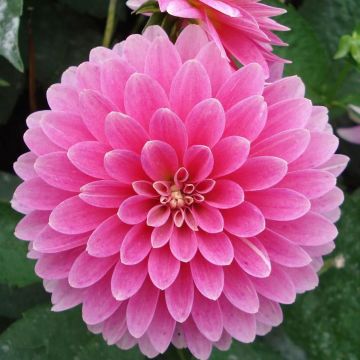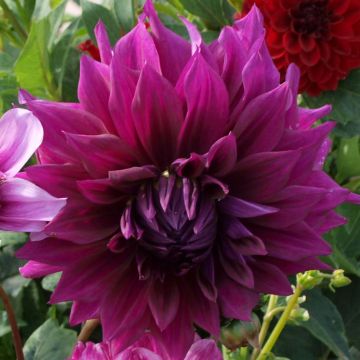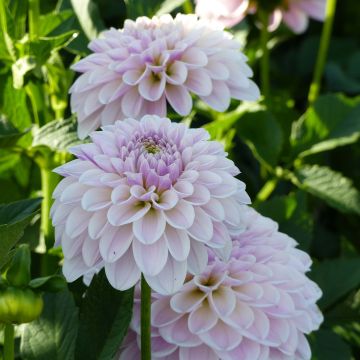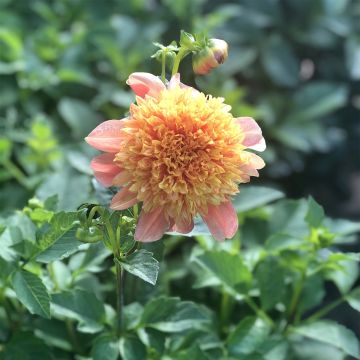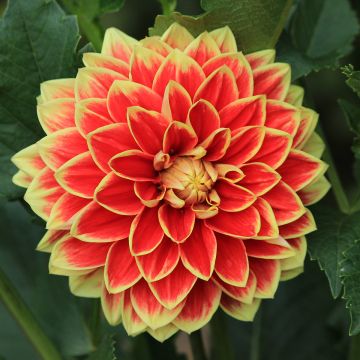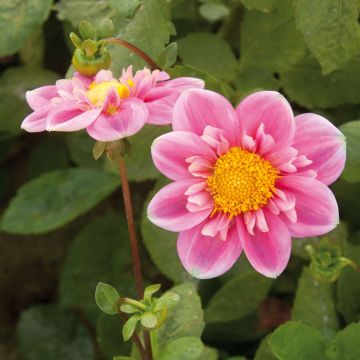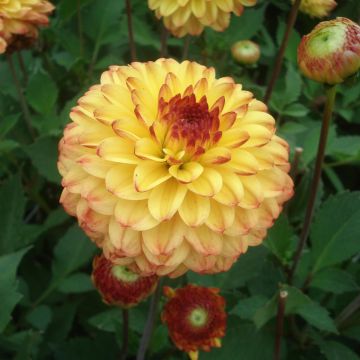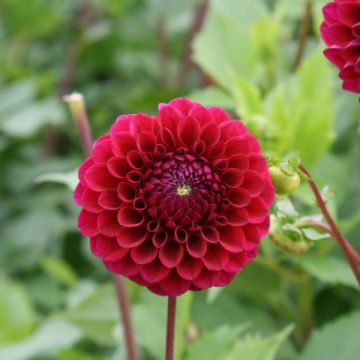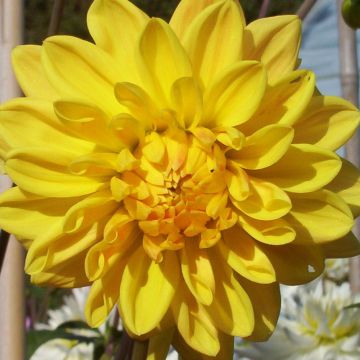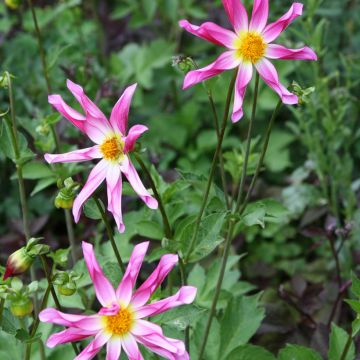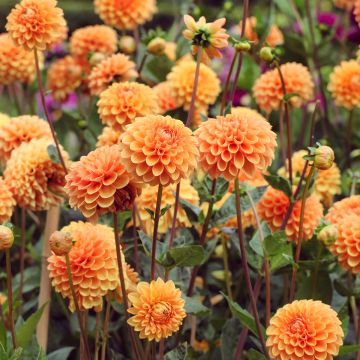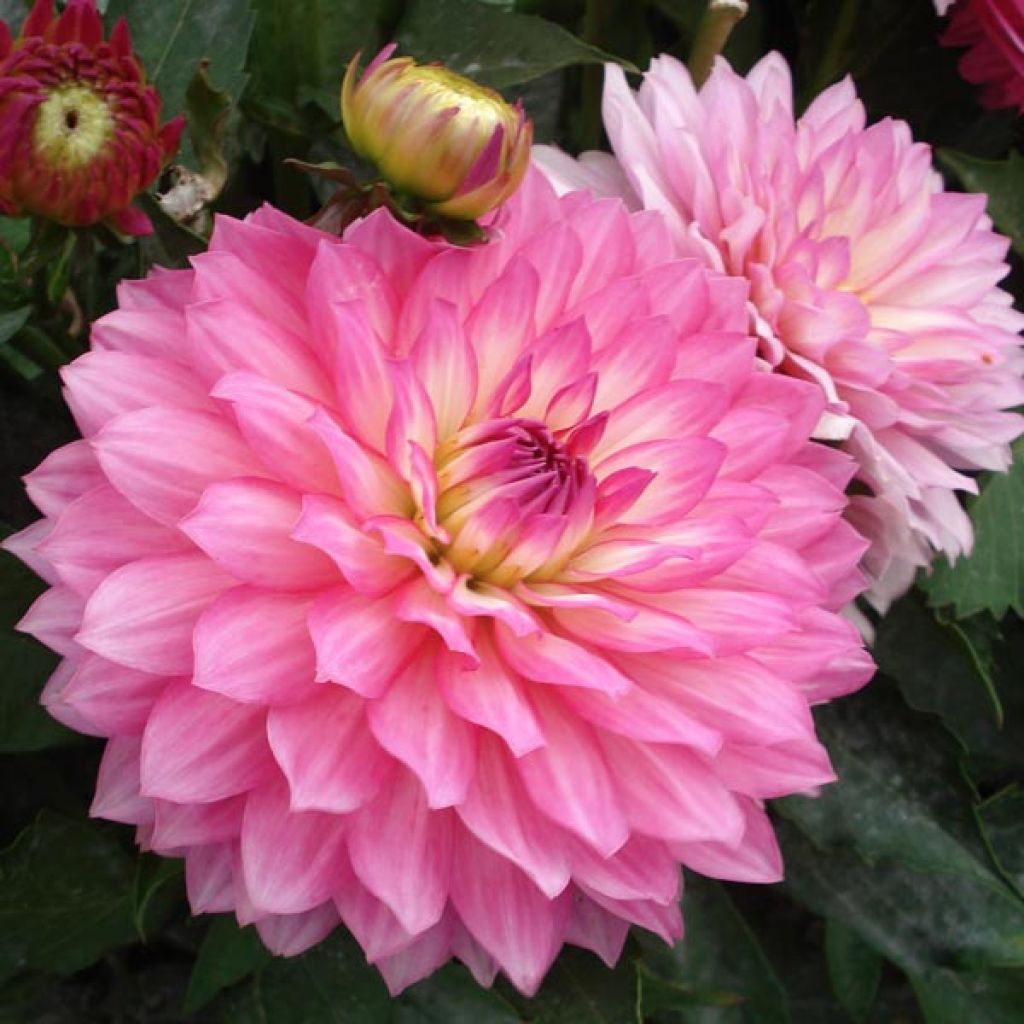

Dahlia Gallery Bellini
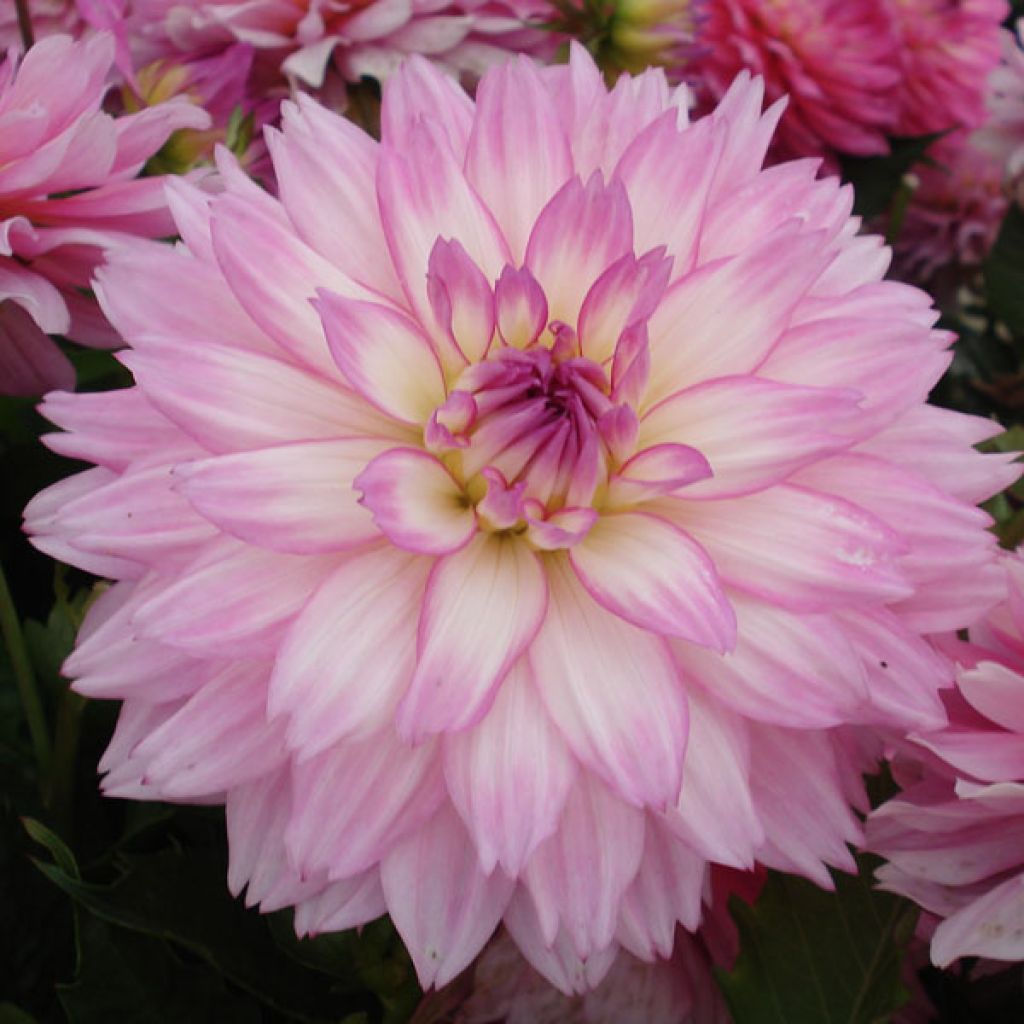

Dahlia Gallery Bellini
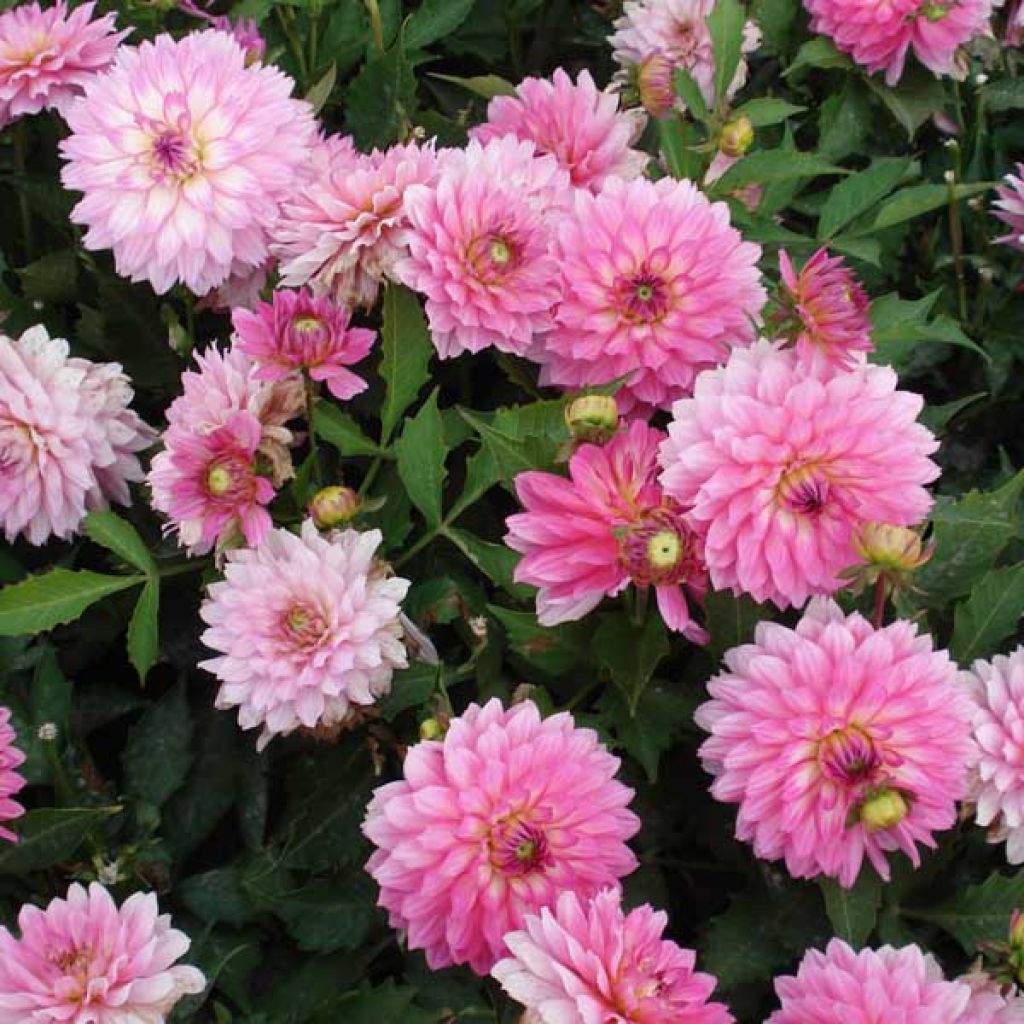

Dahlia Gallery Bellini
Dahlia Gallery Bellini
Dahlia Gallery Bellini
Dahlia
Has not flowered.
rozenn L., 10/11/2018
This item cannot be shipped to the selected country
Delivery charge from €5.90
More information
Schedule delivery date,
and select date in basket
This plant carries a 6 months recovery warranty
More information
We guarantee the quality of our plants for a full growing cycle, and will replace at our expense any plant that fails to recover under normal climatic and planting conditions.
From €5.90 for pickup delivery and €6.90 for home delivery
Express home delivery from €8.90.
Does this plant fit my garden?
Set up your Plantfit profile →
Description
The Gallery Bellini dwarf Dahlia is a mutant of the 'Gallery Pablo' variety. Equally floriferous, it produces dense flowers, with dark pink buds that open to a gradually washed-out pale pink, revealing a very pale yellow heart. The spectacle of its flowering begins in June and only ends with the first frost. Like all varieties in the Gallery series, it is a very compact plant, with excellent floribundity, specifically developed for ornamental containers and flower beds.
Dahlias, belonging to the asteraceae family, are originally from the high plateaus of Mexico. At present, the approximately 25,000 horticultural varieties obtained by humans have invaded, much to our delight, gardens all over the world.
The 'Gallery Bellini' variety is a dwarf dahlia related to Decorative and Cactus Dahlias. The plant will not exceed 40 to 45 cm (16 to 18in) in all directions, it has a bushy and compact habit, not requiring staking. This variety blooms from June to October-November. The dense flower heads are approximately 7 cm (3in) in diameter, taking the form of pretty flattened and regular balls, composed of numerous rows of slightly curved ligules towards the stem, and of a vibrant colour, a mix of lilac pink, white, and cream at the heart. At the end of anthesis, the central disc appears yellow. The very branched stems are hollow and the leaves are opposite and divided into 3 or 5 finely toothed lobes. The leaves and stems are dark green.
To encourage re-flowering and extend the flowering period, be sure to remove faded flowers. Even better, regularly cut them to create attractive colourful bouquets by combining various varieties.
Gallery Dahlias, essential in a flower pot, also thrive at the front of borders or in flower beds, offering a range of colours to choose from according to each gardener's taste. They particularly complement the foliage of grasses; the Pennisetum villosum, a beautiful fluffy grass, Hordeum jubatum (Squirrel-tail Grass), or even Muhlenbergia capillaris will bring softness and delicacy to the decor. They also go well with the plump buds of old roses or Generosa roses. Their association with small white asters or the naive corollas of cosmos creates very balanced scenes.
As the star of borders and herb gardens, Dahlias confidently accompany the most beautiful flowers as well as humble vegetables. They allow for beautiful flower pots or charming bouquets. In Mexico, this tuberous plant was initially cultivated as a root vegetable for consumption. But its poor taste qualities relegated it to the status of an ornamental plant. Since then, the interest in their beautiful exuberance has never waned.
Report an error about the product description
Plant habit
Flowering
Foliage
Botanical data
Dahlia
Gallery Bellini
Asteraceae
Dahlia
Cultivar or hybrid
Other Dwarf Dahlias
Planting and care
The Dahlia 'Gallery Bellini' is easy to grow in all regions. For abundant flowering, it is good to follow a few simple rules. Plant the tubers in full sun as soon as the last frost has passed. Rich, fresh, and well-drained soil is perfect. However, stagnant moisture would promote tuber rot. Feel free to amend the soil with compost and sand if necessary. Work the soil deeply and enrich it, for example, with crushed horn or dehydrated blood. Place your tuber and crumble the soil well to fill without air pockets. Your dahlia should be covered with about 6 cm (2in) of soil. At the end of planting, water generously once, then repeat this watering regularly during the first 6 weeks to aid in rooting.
Dahlias are sensitive to cold, so they need to be overwintered. In November, the first frosts will blacken the foliage, which is the time to dig them up. Carefully remove the tubers from the ground, taking off as much soil as possible. Let the foliage dry so that the tubers can replenish their reserves. Then cut the stems to 10 cm (4in). Spread your bulbs in a box on newspaper. Store in a frost-free, dry, cool, and dark place, such as a garage or attic. In southern regions, close to the coast, where there are only a few days of frost per year, it is possible to leave them in place. In this case, simply cover the soil with a layer of leaves or straw for protection.
Planting period
Intended location
Care
-
, onOrder confirmed
Reply from on Promesse de fleurs
Dahlias
Haven't found what you were looking for?
Hardiness is the lowest winter temperature a plant can endure without suffering serious damage or even dying. However, hardiness is affected by location (a sheltered area, such as a patio), protection (winter cover) and soil type (hardiness is improved by well-drained soil).

Photo Sharing Terms & Conditions
In order to encourage gardeners to interact and share their experiences, Promesse de fleurs offers various media enabling content to be uploaded onto its Site - in particular via the ‘Photo sharing’ module.
The User agrees to refrain from:
- Posting any content that is illegal, prejudicial, insulting, racist, inciteful to hatred, revisionist, contrary to public decency, that infringes on privacy or on the privacy rights of third parties, in particular the publicity rights of persons and goods, intellectual property rights, or the right to privacy.
- Submitting content on behalf of a third party;
- Impersonate the identity of a third party and/or publish any personal information about a third party;
In general, the User undertakes to refrain from any unethical behaviour.
All Content (in particular text, comments, files, images, photos, videos, creative works, etc.), which may be subject to property or intellectual property rights, image or other private rights, shall remain the property of the User, subject to the limited rights granted by the terms of the licence granted by Promesse de fleurs as stated below. Users are at liberty to publish or not to publish such Content on the Site, notably via the ‘Photo Sharing’ facility, and accept that this Content shall be made public and freely accessible, notably on the Internet.
Users further acknowledge, undertake to have ,and guarantee that they hold all necessary rights and permissions to publish such material on the Site, in particular with regard to the legislation in force pertaining to any privacy, property, intellectual property, image, or contractual rights, or rights of any other nature. By publishing such Content on the Site, Users acknowledge accepting full liability as publishers of the Content within the meaning of the law, and grant Promesse de fleurs, free of charge, an inclusive, worldwide licence for the said Content for the entire duration of its publication, including all reproduction, representation, up/downloading, displaying, performing, transmission, and storage rights.
Users also grant permission for their name to be linked to the Content and accept that this link may not always be made available.
By engaging in posting material, Users consent to their Content becoming automatically accessible on the Internet, in particular on other sites and/or blogs and/or web pages of the Promesse de fleurs site, including in particular social pages and the Promesse de fleurs catalogue.
Users may secure the removal of entrusted content free of charge by issuing a simple request via our contact form.
The flowering period indicated on our website applies to countries and regions located in USDA zone 8 (France, the United Kingdom, Ireland, the Netherlands, etc.)
It will vary according to where you live:
- In zones 9 to 10 (Italy, Spain, Greece, etc.), flowering will occur about 2 to 4 weeks earlier.
- In zones 6 to 7 (Germany, Poland, Slovenia, and lower mountainous regions), flowering will be delayed by 2 to 3 weeks.
- In zone 5 (Central Europe, Scandinavia), blooming will be delayed by 3 to 5 weeks.
In temperate climates, pruning of spring-flowering shrubs (forsythia, spireas, etc.) should be done just after flowering.
Pruning of summer-flowering shrubs (Indian Lilac, Perovskia, etc.) can be done in winter or spring.
In cold regions as well as with frost-sensitive plants, avoid pruning too early when severe frosts may still occur.
The planting period indicated on our website applies to countries and regions located in USDA zone 8 (France, United Kingdom, Ireland, Netherlands).
It will vary according to where you live:
- In Mediterranean zones (Marseille, Madrid, Milan, etc.), autumn and winter are the best planting periods.
- In continental zones (Strasbourg, Munich, Vienna, etc.), delay planting by 2 to 3 weeks in spring and bring it forward by 2 to 4 weeks in autumn.
- In mountainous regions (the Alps, Pyrenees, Carpathians, etc.), it is best to plant in late spring (May-June) or late summer (August-September).
The harvesting period indicated on our website applies to countries and regions in USDA zone 8 (France, England, Ireland, the Netherlands).
In colder areas (Scandinavia, Poland, Austria...) fruit and vegetable harvests are likely to be delayed by 3-4 weeks.
In warmer areas (Italy, Spain, Greece, etc.), harvesting will probably take place earlier, depending on weather conditions.
The sowing periods indicated on our website apply to countries and regions within USDA Zone 8 (France, UK, Ireland, Netherlands).
In colder areas (Scandinavia, Poland, Austria...), delay any outdoor sowing by 3-4 weeks, or sow under glass.
In warmer climes (Italy, Spain, Greece, etc.), bring outdoor sowing forward by a few weeks.

































